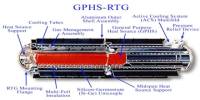Ferroelectricity is a property of certain materials in which they exhibit a spontaneous electric polarization that can be reversed by an external electric field. These materials are called ferroelectric materials and are characterized by having a permanent dipole moment that can be oriented in two or more directions.
Ferroelectricity is a property of certain materials in which the spontaneous electric polarization can be reversed by applying an external electric field. All ferroelectrics are also piezoelectric and pyroelectric, with the added benefit of reversible natural electrical polarization. The term is analogous to ferromagnetism, which occurs when a material has a permanent magnetic moment.
Ferromagnetism was already known when Joseph Valasek discovered ferroelectricity in Rochelle salt in 1920. Despite the fact that most ferroelectric materials do not contain iron, the prefix ferro, which means iron, was used to describe the property. Multiferroics are materials that are both ferroelectric and ferromagnetic.
Ferroelectric materials have a crystal structure that is non-centrosymmetric, meaning that the arrangement of atoms in the crystal lattice does not have a center of symmetry. This gives rise to a spontaneous polarization, which can be switched between two or more stable states by applying an external electric field.
Ferroelectric materials have a crystal structure that lacks a center of symmetry, which allows for the spontaneous polarization to occur. The direction of polarization is determined by the orientation of the crystal lattice, and it can be switched by applying an external electric field in the opposite direction.
Applications
Ferroelectricity has many practical applications, such as in memory devices, sensors, actuators, and other electronic components. It is also important in the field of solid-state physics and has been the subject of much research over the years.
Ferroelectric materials have a wide range of applications in electronics, such as in capacitors, non-volatile memory devices, and sensors. They are also used in actuators, transducers, and piezoelectric devices, due to their ability to convert mechanical energy into electrical energy, and vice versa. Some examples of ferroelectric materials include barium titanate, lead zirconate titanate (PZT), lithium niobate, and potassium niobate.
Because ferroelectric materials are nonlinear, they can be used to create capacitors with variable capacitance. A ferroelectric capacitor is typically made up of a pair of electrodes sandwiched between layers of ferroelectric material. Ferroelectric permittivity is not only adjustable, but also very high, especially near the phase transition temperature. As a result, ferroelectric capacitors are smaller in physical size than dielectric (non-tunable) capacitors of comparable capacitance.
















